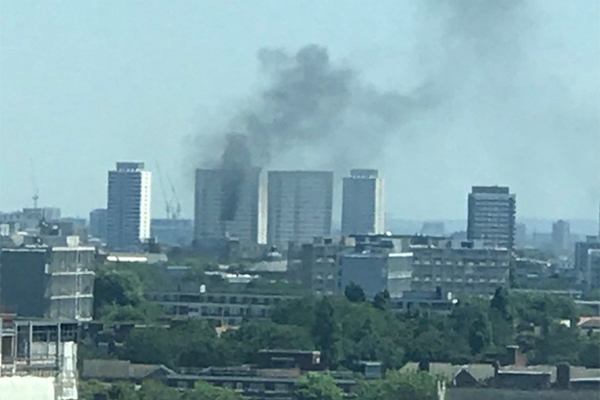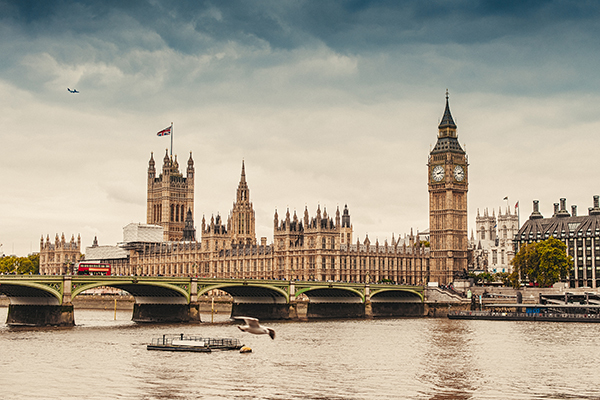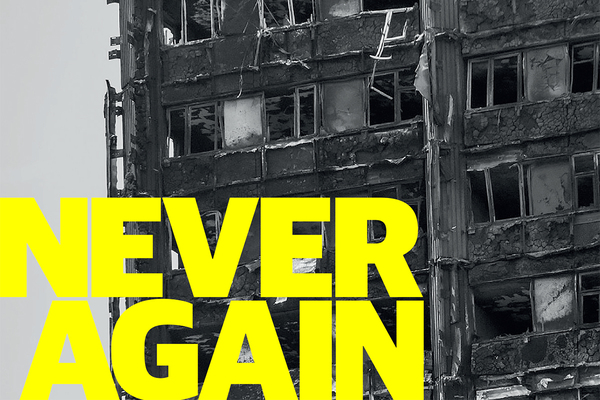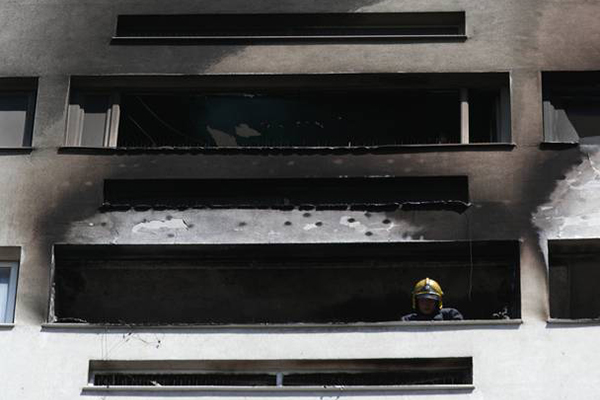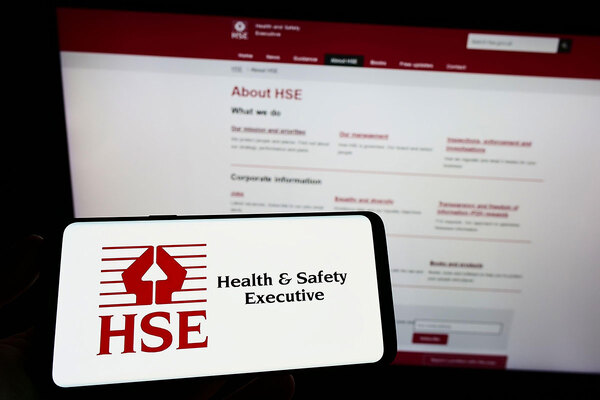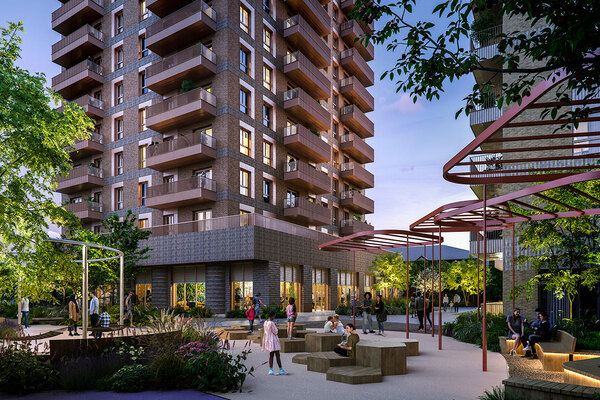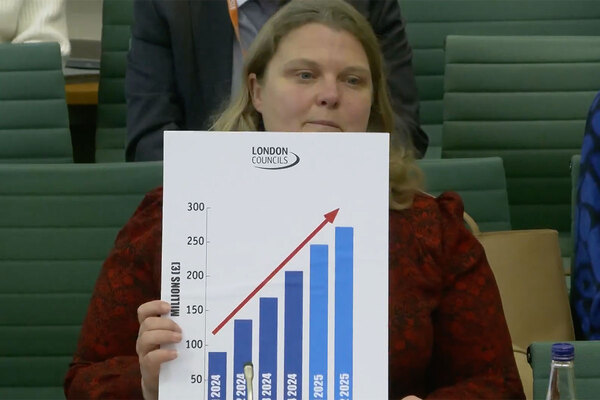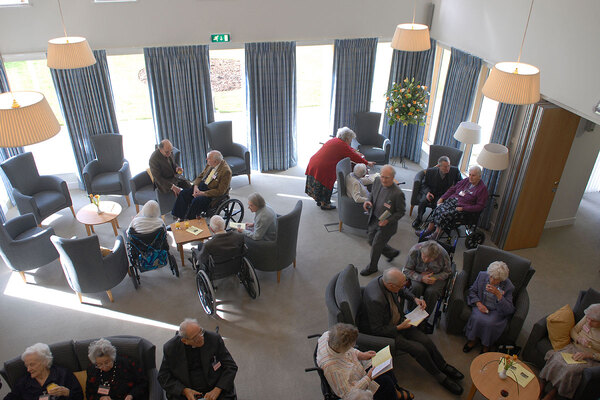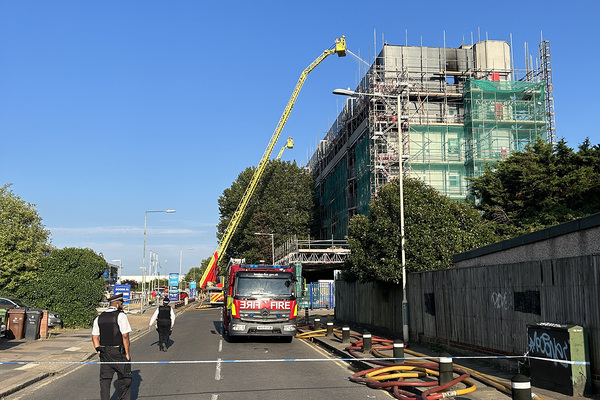Non-combustible cladding system used on tower block which resisted large fire
A housing association tower block which withstood a large blaze last Friday was insulated with a non-combustible system, Inside Housing understands.
More than 50 firefighters attended the blaze at Grafton House, in east London, on Friday. Flames poured out of a window on the 12th floor in a large fire which destroyed much of one flat.
But the fire at the block, owned by housing association EastEndHomes, did not spread extensively through the inside or outside of the building, with the exception of some damage to the balcony above and no residents were seriously hurt or killed.
Inside Housing has confirmed the building was fitted with a ‘rendered’ insulation system, which comprises mineral wool insulation and concrete and is attached directly to the building without a cavity gap.
The system used Rockwool insulation and Alsecco Ecomin 300 and would have an A2 rating for fire safety – signifying limited combustibility.
It is understood rendered systems are cheaper to install than the rainscreen system used on Grenfell, but rainscreen cladding is preferred for its appearance.
The cavity at Grenfell has been widely blamed for creating a chimney effect which allowed fire to shoot up the 24-storey building in minutes, as well as allowing the flames to attack the combustible insulation.
Many rendered systems use expanded polystyrene insulation, which has a much lower fire safety rating.
Photos from the blaze appear to show damage to windows above the flat of origin, which can be caused by fire ‘rolling over’ from window to the other.
In a statement on the blaze, the fire service said: “Most of a three-roomed flat on the 12th floor was damaged by the fire and part of the balcony of the 13th floor was also damaged.
“Around 44 people left the building before the brigade arrived and a further two people were led to safety by firefighters. There were no reports of any injuries.”
The cause of the fire is under investigation.
Grenfell Tower, where 72 residents died after a devastating blaze in June last year, was clad with an aluminium composite material product with a core of combustible polyethylene plastic.
The material was certified to ‘Class 0’ by the British Board of Agrément, although evidence submitted to the inquiry has suggested this certificate should not have been granted.
Building regulations require the external surfaces of tall buildings to be built with materials with a Class 0 rating, and this was widely understood to include cladding.
The system also comprised a cavity gap and plastic polyisocyanurate insulation attached flush to the walls.
A planning application for the refurbishment which installed the insulation on Grenfell said: “The changes to the existing tower will improve its appearance especially when viewed from the surrounding area. Therefore views into and out of the conservation areas will be improved by the proposals.”
Never Again campaign
In the days following the Grenfell Tower fire on 14 June 2017, Inside Housing launched the Never Again campaign to call for immediate action to implement the learning from the Lakanal House fire, and a commitment to act – without delay – on learning from the Grenfell Tower tragedy as it becomes available.
One year on, we have extended the campaign asks in the light of information that has emerged since.
Here are our updated asks:
GOVERNMENT
- Act on the recommendations from Dame Judith Hackitt’s review of building regulations to tower blocks of 18m and higher. Commit to producing a timetable for implementation by autumn 2018, setting out how recommendations that don’t require legislative change can be taken forward without delay
- Follow through on commitments to fully ban combustible materials on high-rise buildings
- Unequivocally ban desktop studies
- Review recommendations and advice given to ministers after the Lakanal House fire and implement necessary changes
- Publish details of all tower blocks with dangerous cladding, insulation and/or external panels and commit to a timeline for remedial works. Provide necessary guidance to landlords to ensure that removal work can begin on all affected private and social residential blocks by the end of 2018. Complete quarterly follow-up checks to ensure that remedial work is completed to the required standard. Checks should not cease until all work is completed.
- Stand by the prime minister’s commitment to fully fund the removal of dangerous cladding
- Fund the retrofitting of sprinkler systems in all tower blocks across the UK (except where there are specific structural reasons not to do so)
- Explore options for requiring remedial works on affected private sector residential tower blocks
LOCAL GOVERNMENT
- Take immediate action to identify privately owned residential tower blocks so that cladding and external panels can be checked
LANDLORDS
- Publish details of the combinations of insulations and cladding materials for all high rise blocks
- Commit to ensuring that removal work begins on all blocks with dangerous materials by the end of 2018 upon receipt of guidance from government
- Publish current fire risk assessments for all high rise blocks (the Information Commissioner has required councils to publish and recommended that housing associations should do the same). Work with peers to share learning from assessments and improve and clarify the risk assessment model.
- Commit to renewing assessments annually and after major repair or cladding work is carried out. Ensure assessments consider the external features of blocks. Always use an appropriate, qualified expert to conduct assessments.
- Review and update evacuation policies and ‘stay put’ advice in the light of risk assessments, and communicate clearly to residents
- Adopt Dame Judith Hackitt’s recommended approach for listening to and addressing tenants’ concerns, with immediate effect
CURRENT SIGNATORIES:
- Chartered Institute of Housing
- G15
- National Federation of ALMOs
- National Housing Federation
- Placeshapers
The Paper Trail: The Failure of Building Regulations
Read our in-depth investigation into how building regulations have changed over time and how this may have contributed to the Grenfell Tower fire:
